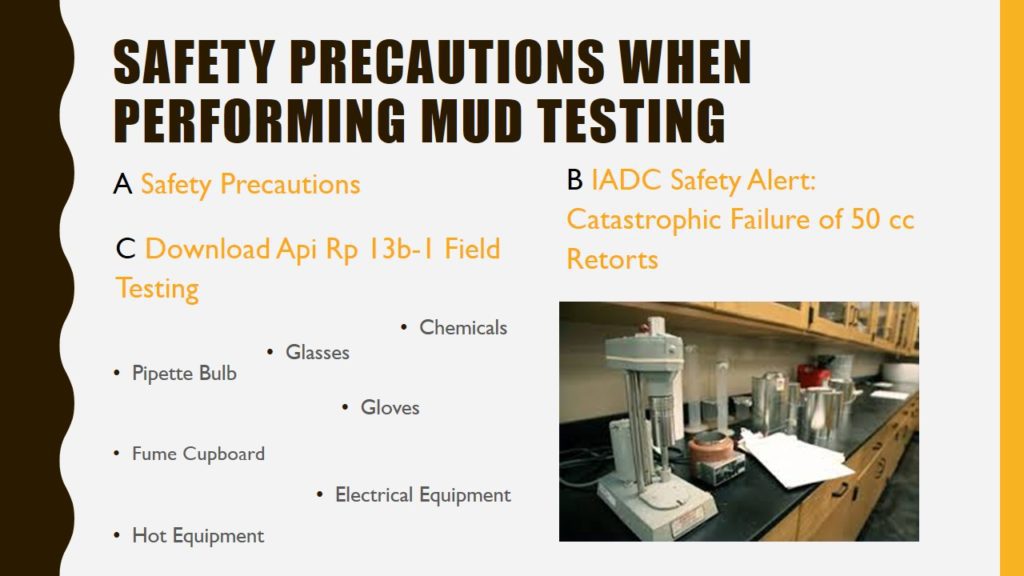Precautions must be taken when performing mud checks because dangerous chemicals are often used and some of the mud testing equipment is subjected to high temperatures and pressures. Some basic rules for the mud lab are as follows:-

- Wear Safety Glasses for protection against chemical splashes.
- Wear Surgical Gloves to avoid chemical contact with the skin.
- Use a Pipette Bulb/Pump to avoid accidental ingestion of chemical reagents (see below).
- Use the Fume Cupboard to avoid fumes while performing chemical tests.
- Bleed off pressure completely before dismantling pressurized equipment (e.g., HPHT cell).
- Isolate hot equipment (Retort, HPHT cells, etc.) safely when cooling down.
- Disconnect electrical equipment from the mains before cleaning (e.g., heating cups).
- Store dangerous chemicals in a secure cabinet below eye level.
IADC Safety Alert: Catastrophic Failure of 50 cc Retorts
This alert was released following two catastrophic failures of 50 cc Retorts during routine oil-on-cuttings checks. Investigations into the root cause of the problem were hampered by the excessive damage caused when the Retort burst: “It appears that the bursting failure occurred as a result of over-pressurization. The Retort separated across the screw thread. Though it cannot be proved, the consensus of opinion is that the spout must have become blocked with a mixture of tars/solids/ emulsifiers”. The following guidelines should be followed to ensure the safe operation of Retorts:
- Retorts, particularly the spout, must be cleaned thoroughly after every test.
- Pipe cleaners and fine wire brushes should be used to scrape any residue out of the spout.
- The steel wool should be changed out after every test to prevent solids from building up.
- The threads on the Retort should be visually inspected before use.
- Check for signs of “belling” of the Retort around the threads.
- Another early warning sign of thread damage is movement (or rattling) during threading.
- Retorts should be changed out every six months for thorough examination.